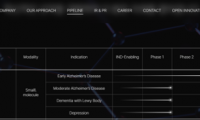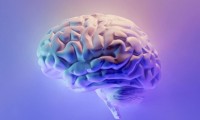-
$770 Million! AriBio authorizes Marketing Rights for a Drug to Treat Alzheimer’s Disease in China
- Source: drugdu
- 143
- March 28, 2024
-
Groundbreaking pTau217 Blood Test as Accurate as Brain Imaging or CSF Testing in Diagnosing Alzheimer’s
- Source: drugdu
- 153
- March 23, 2024
-
Poor spatial navigation could predict Alzheimer’s before symptom onset
- Source: drugdu
- 73
- March 6, 2024
-
New Alzheimer’s Detecting Blood Tests Perform across Broad Range of Races and Ethnicities
- Source: drugdu
- 122
- March 2, 2024
-
Alzheimer’s Blood Test Could Soon Replace Invasive Spinal Taps and Brain Scans
- Source: drugdu
- 167
- February 28, 2024
-
Cerebrospinal Fluid Testing of Alzheimer’s Patients to Help Identify Disease Molecular Subtype
- Source: drugdu
- 171
- January 17, 2024
-
Stem-cell-derived brain cells hold promise for Alzheimer’s, Parkinson’s research
- Source: drugdu
- 115
- November 21, 2023
-
Specific navigational errors may indicate early signs of Alzheimer’s disease
- Source: drugdu
- 121
- October 13, 2023
-
New Alzheimer’s disease medication approved in Japan
- Source: drugdu
- 107
- October 6, 2023
-
Photobiomodulation in sleep has more therapeutic effects for Alzheimer’s disease than in wakefulness
- Source: drugdu
- 214
- September 25, 2023
your submission has already been received.
OK
Subscribe
Please enter a valid Email address!
Submit
The most relevant industry news & insight will be sent to you every two weeks.













